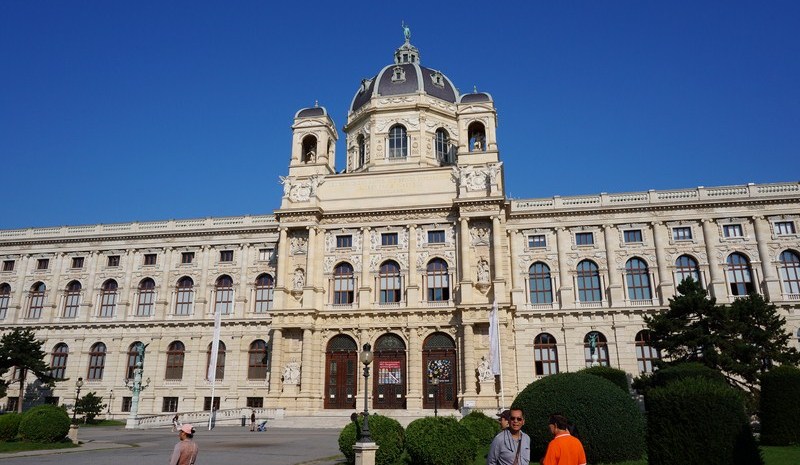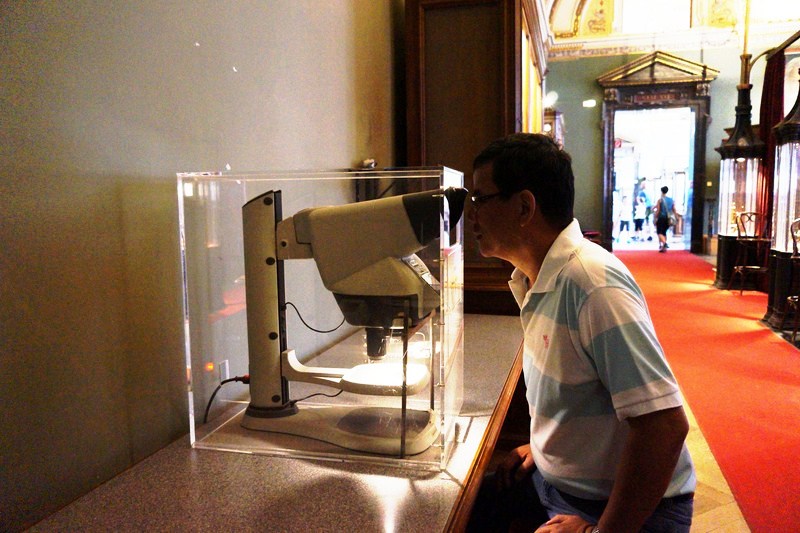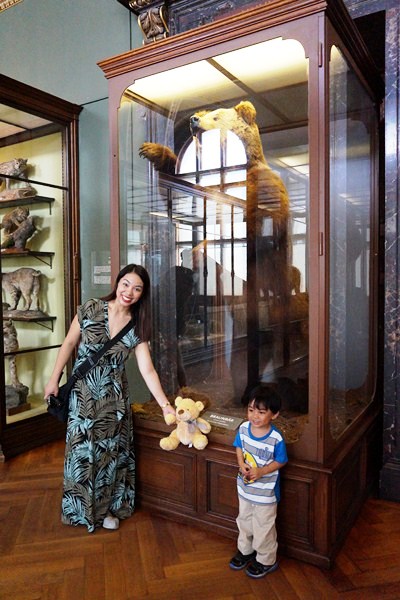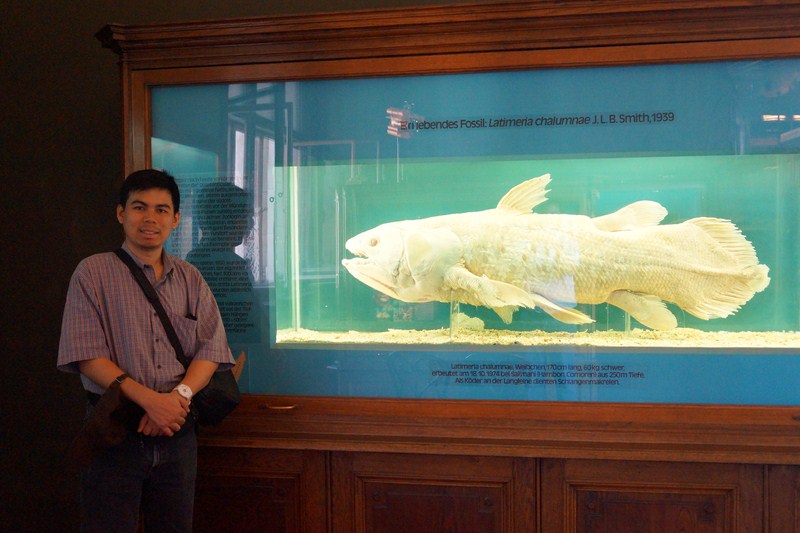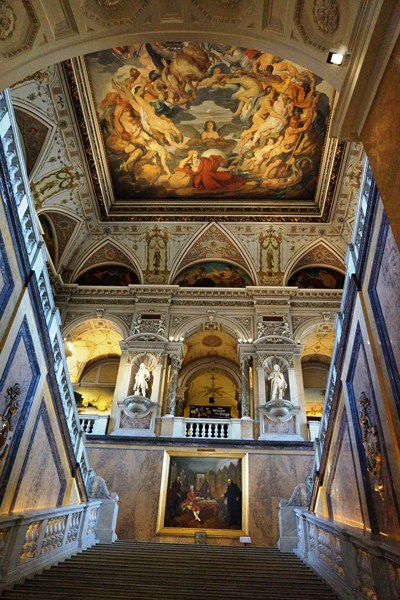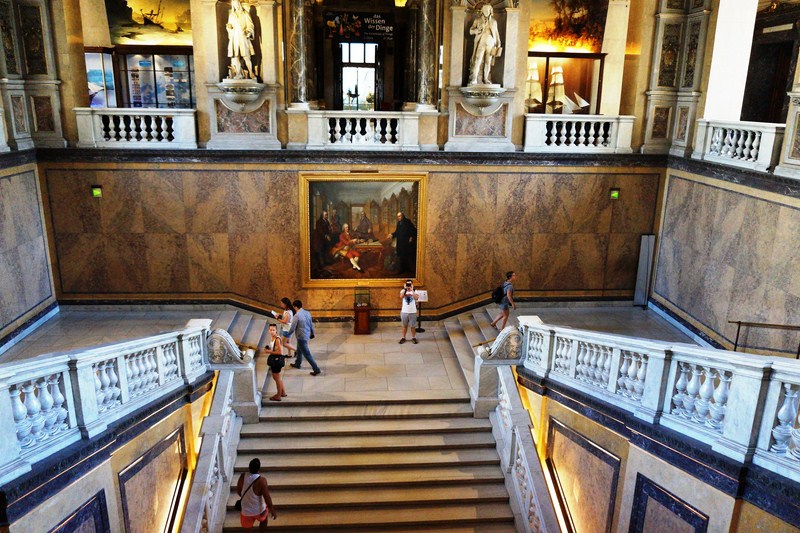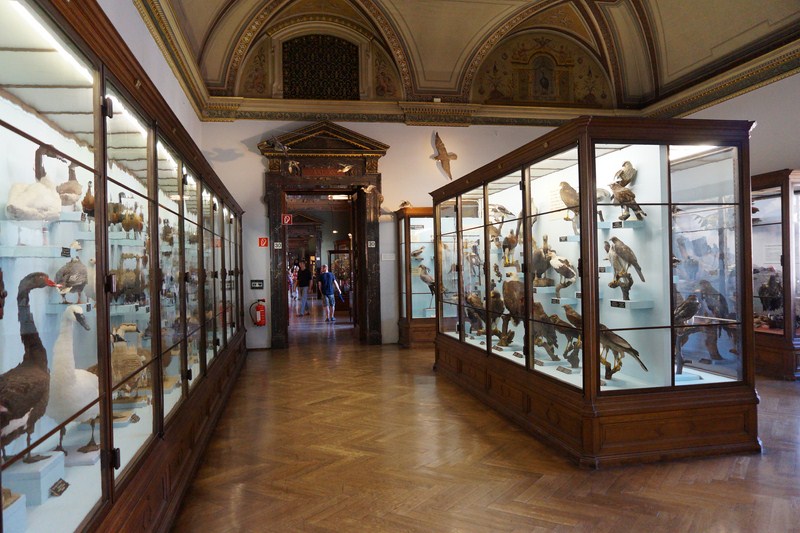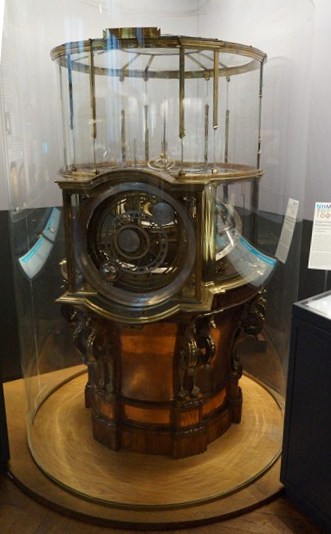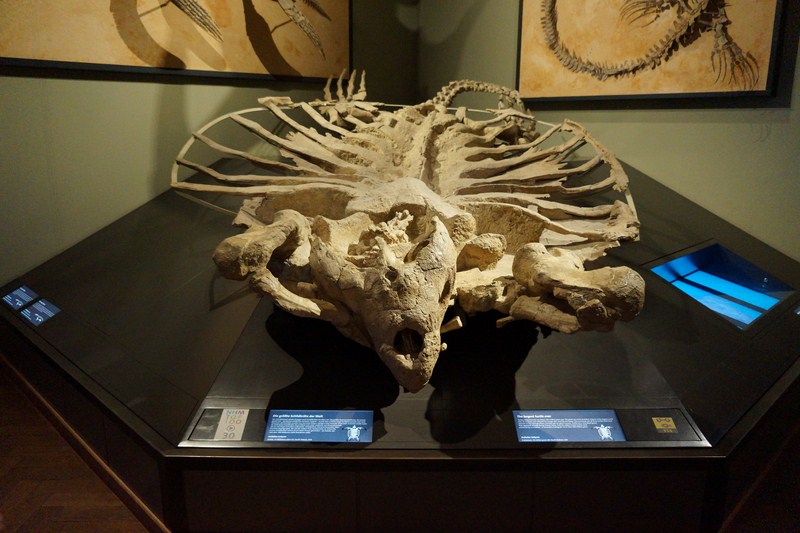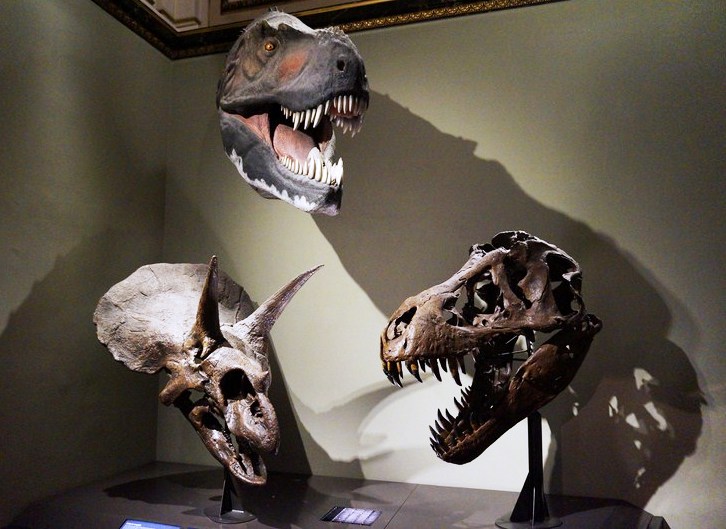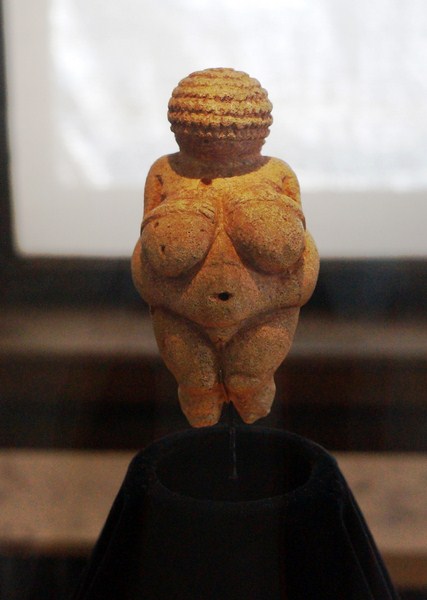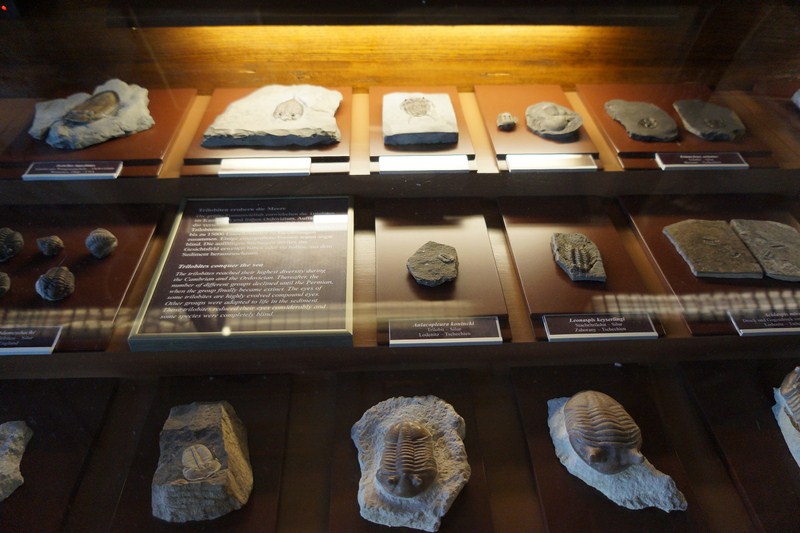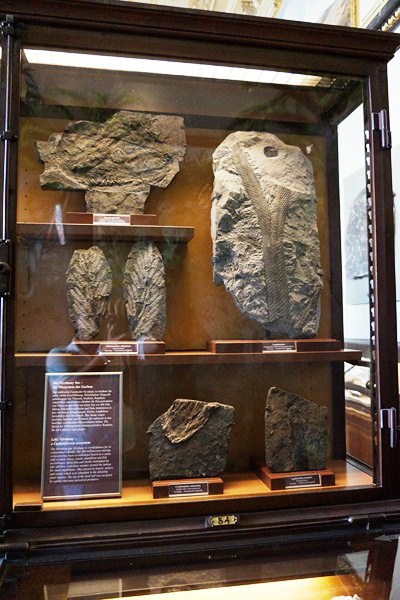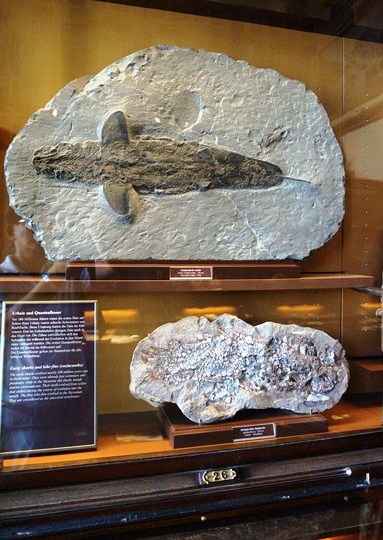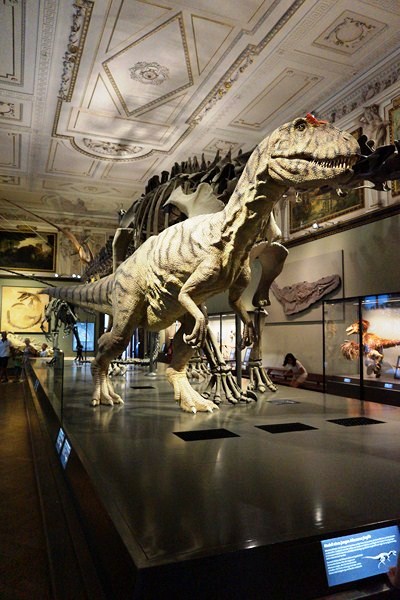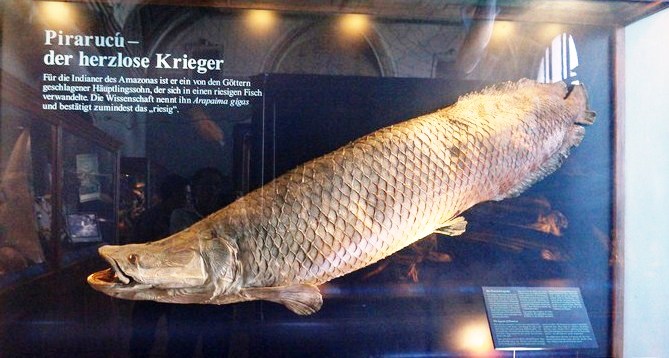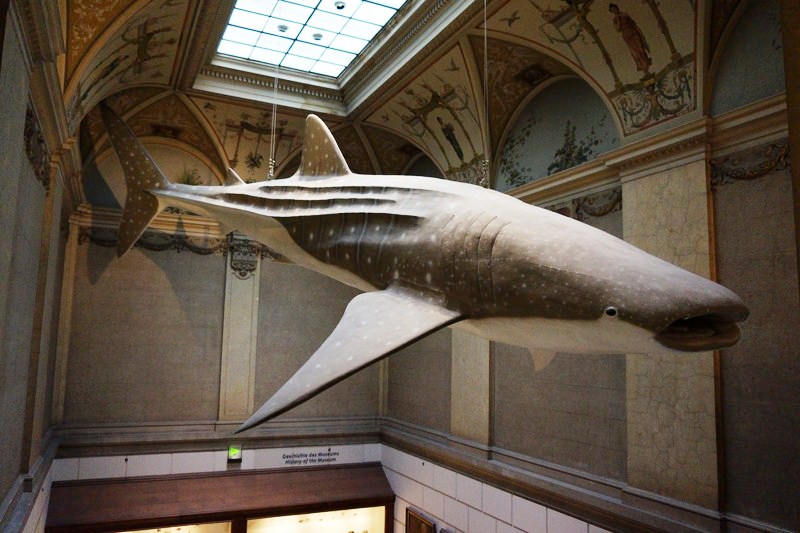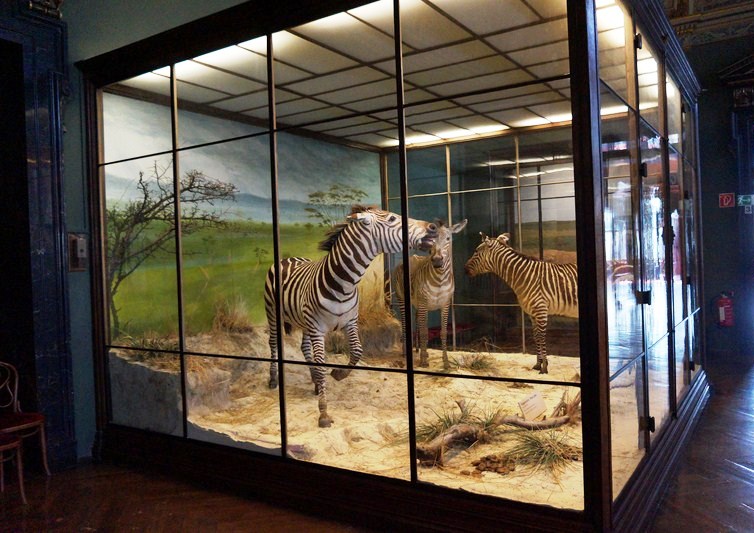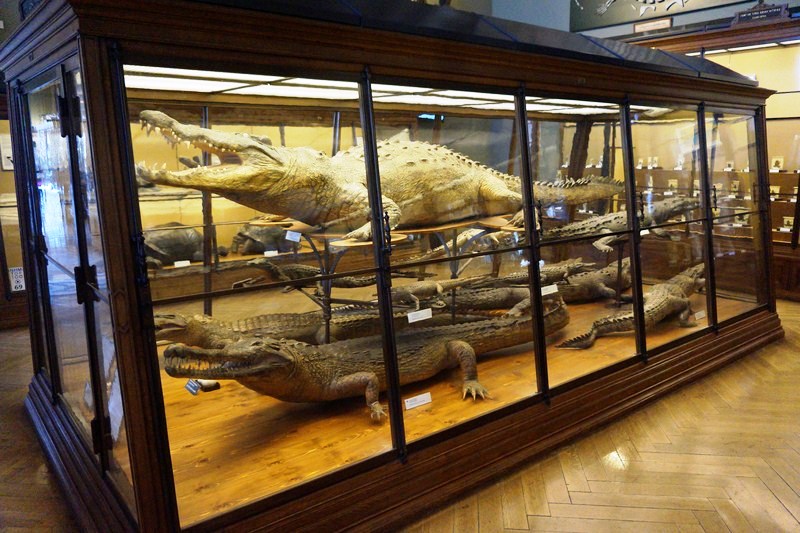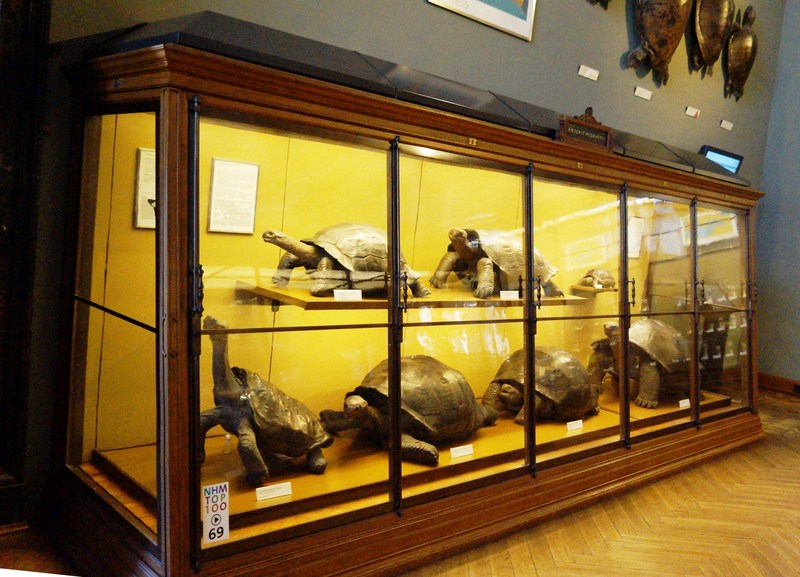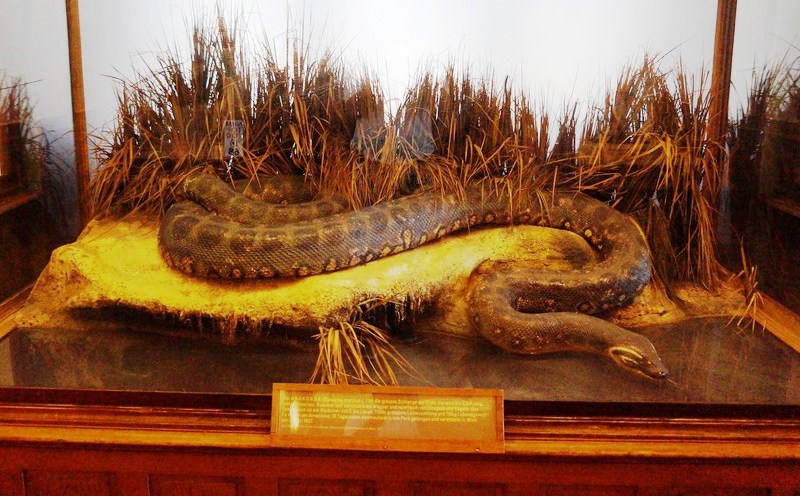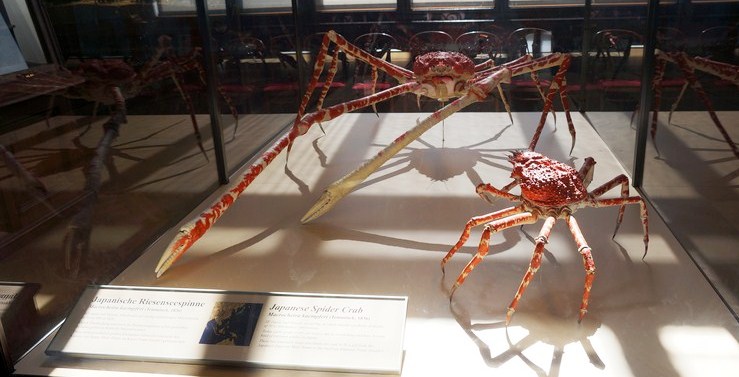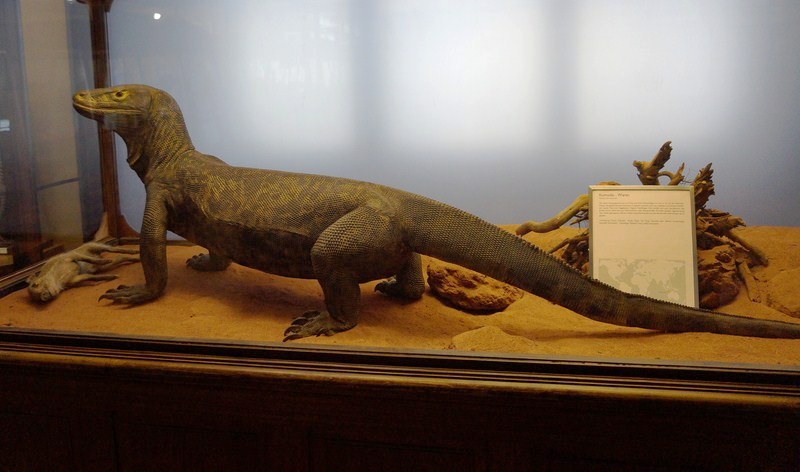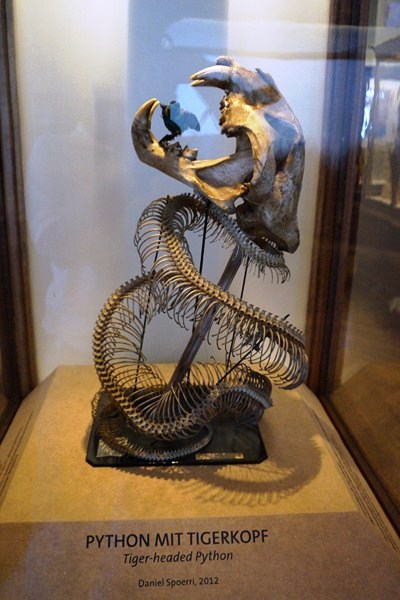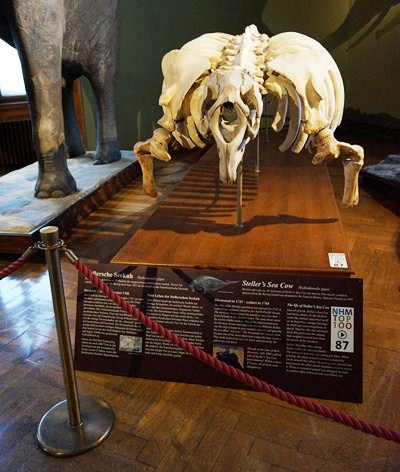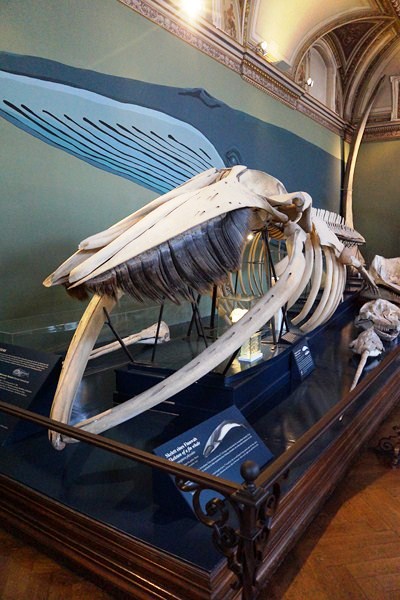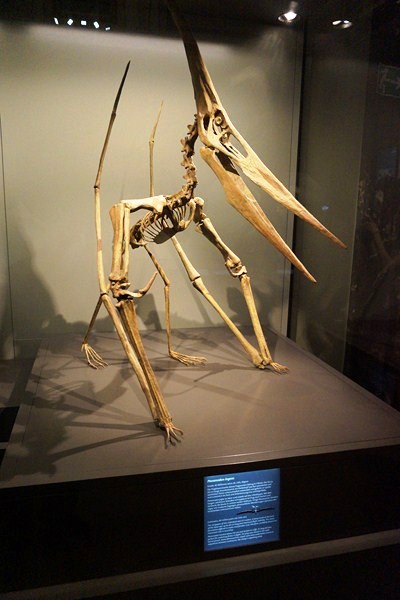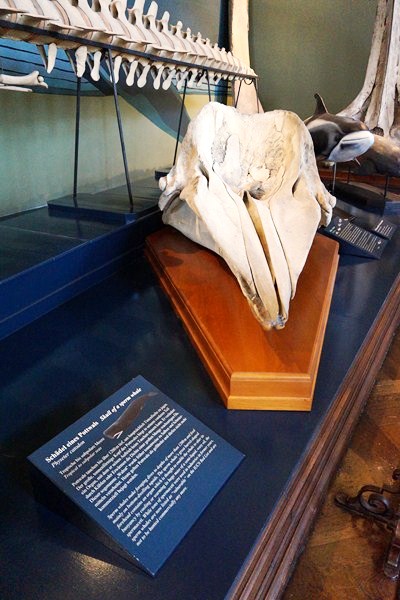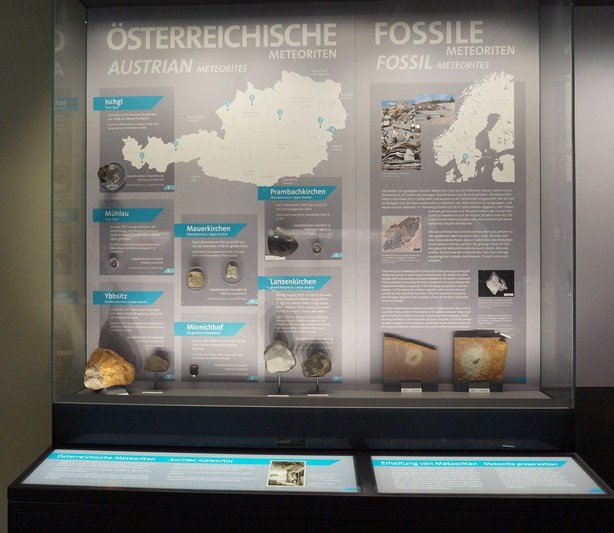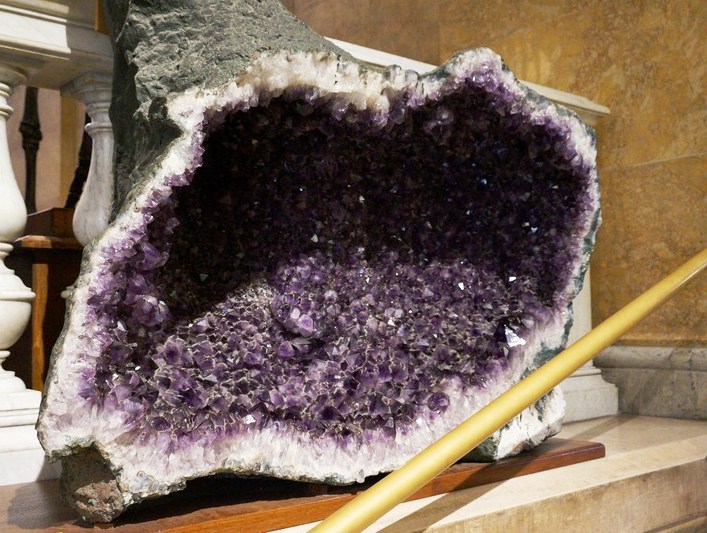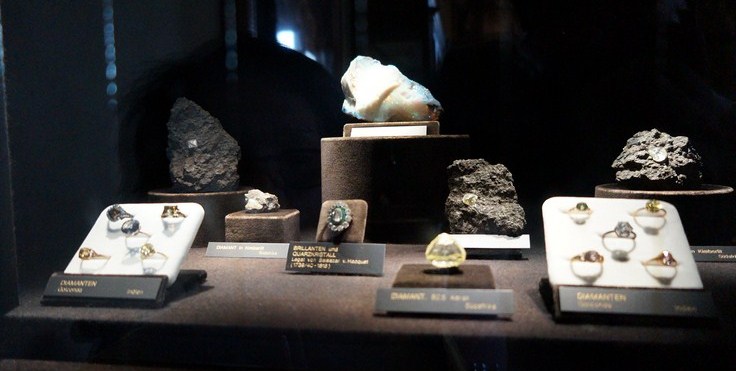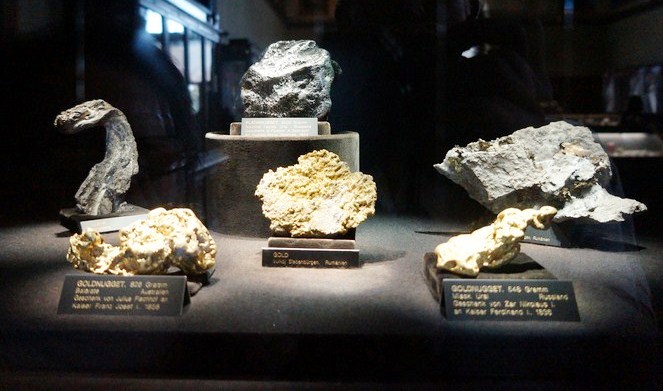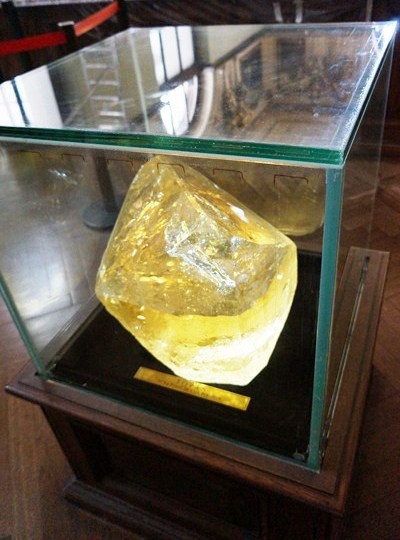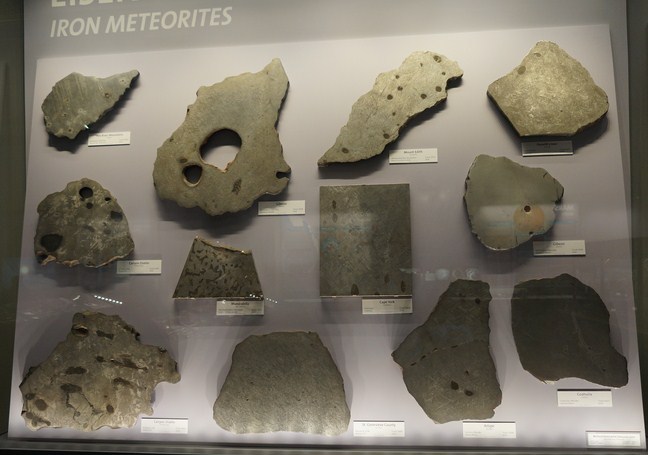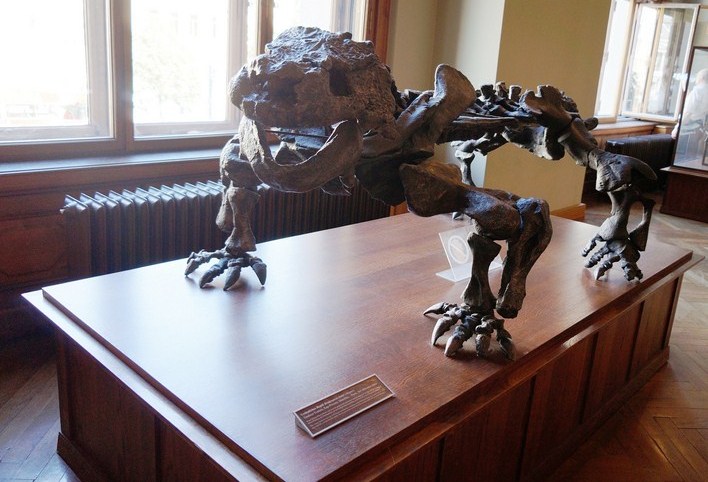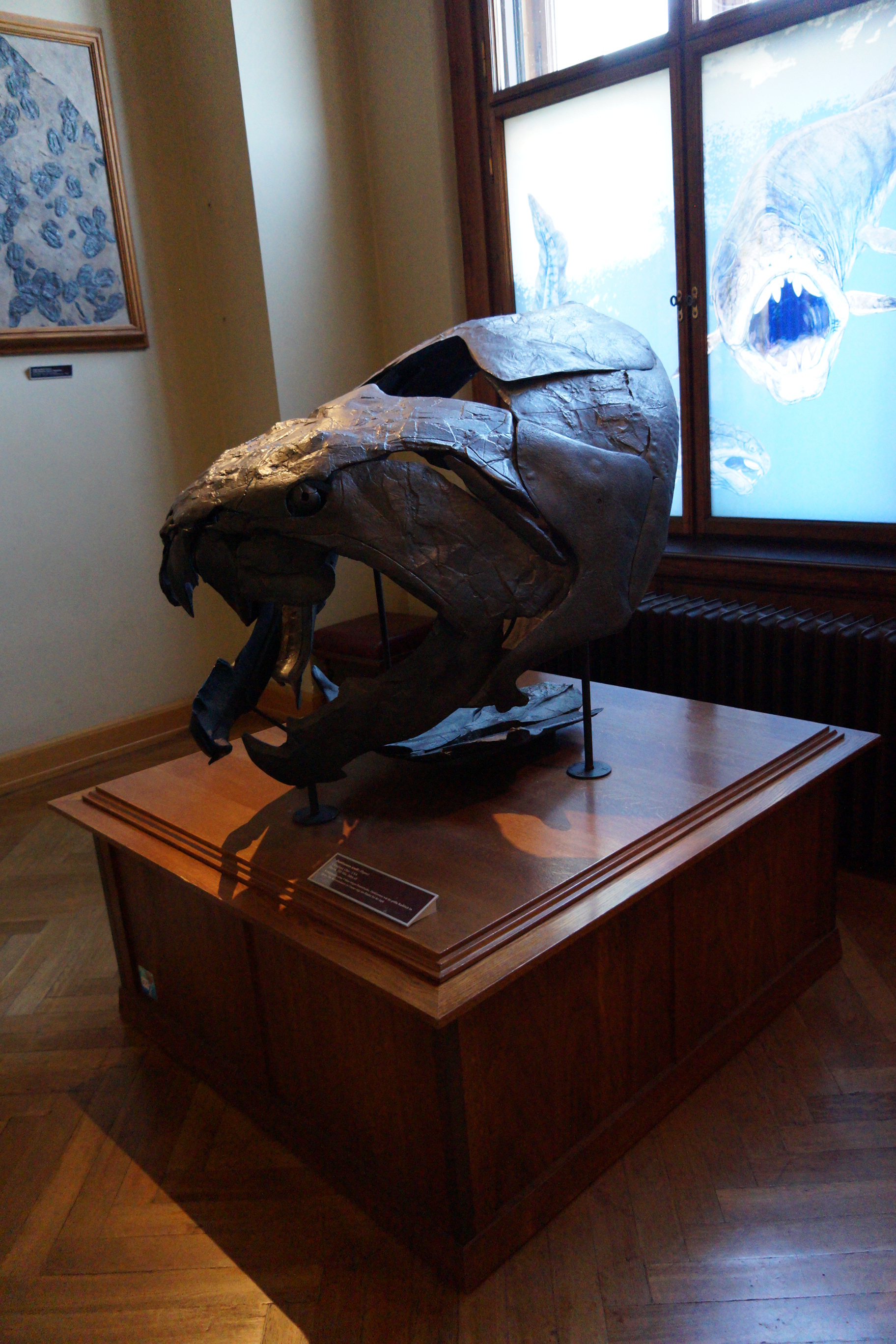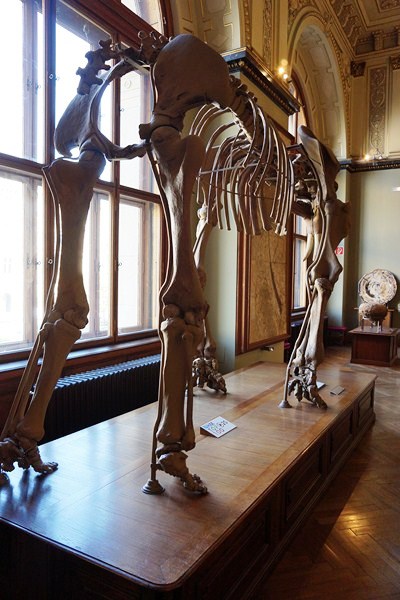The Museum of Natural History (NHM, German: Naturhistorisches Museum), amongst the most splendid of the buildings that line the Vienna Ringstrasse, houses one of the largest natural history collections in the world.
Founded 250 years ago by Franz Stephan von Lothringen, the Natural History Museum was built as a cathedral to the natural sciences between 1872 and 1891 according to plans drawn up by Gottfried Semper and Karl Freiherr von Hasenauer.
The building itself, a masterpiece of historical Neo-Renaissance architecture, was opened in 1889 as the Imperial Natural History Museum, at the same time as the Kunsthistorisches Museum. The two museums, on the Ringstraße, facing each other across Maria-Theresien-Platz, have identical exteriors.
Built to house the huge collection of the Habsburgs, it has timeless elegance. Its ornate decoration, furniture and precious exhibits make it a feast for the eyes for those interested in arts, scienceand architecture. The building itself is an artifact for historical preservation.
Its collection, in 39 exhibit halls against a backdrop of magnificent halls and spread out in 8,700 sq. m. (94,000 sq. ft.), has grown to approximately 30 million objects and artifacts (as of 2011), 25 million of which are the essential basis for the work of over 60 staff scientists.
The scientists’s main fields of research cover a wide range of topics, from the origins of the Solar System and the evolution of animals and plants to human evolution, as well as prehistoric traditions and customs. It forms the basis for natural sciences research at the NHM.
On display at the first floor are a variety of species from the animal world, from protozoa to insects to highly developed living mammals in modern terraria and aquaria.
Those over 200 years old, on their own account, are of particular interest as historical records for the history of science and the art of taxidermy.
Numerous stuffed animals, of species either long-extinct (such as Steller’s sea cow) or extremely endangered, have made the collections truly famous and irreplaceable.
The upper floor (Hochparterre) displays the following:
- precious stones including the unique gemstone-and-diamond bouquet of flowers whichMaria Theresia had made as a present for her husband
- minerals (some with origin in old Renaissance collections) including a giant topaz crystal weighing 117 (258 lbs.)
- meteorites(the world’s largest and oldest public collection) including the spectacular “Tissint” meteorite from Mars.
- rare fossils
- prehistoric artworks such as the 25,000-year-old Venus of Willendorf
- the enormous dinosaur skeletons including a copy of the skeleton of a Diplodocus dinosaur (Diplodocus carnegii), a gift from Andrew Carnegie.
Some of the signs and explanations in the museum are in German but, following a recent renovation, much of the museum is now in German and English.
Natural History Museum : Burgring 7, 1010 Vienna, Austria. Tel: +43 1 521770. Open 9 AM – 6:30 PM. The museum’s website provides an overview in the form of a virtual tour.

